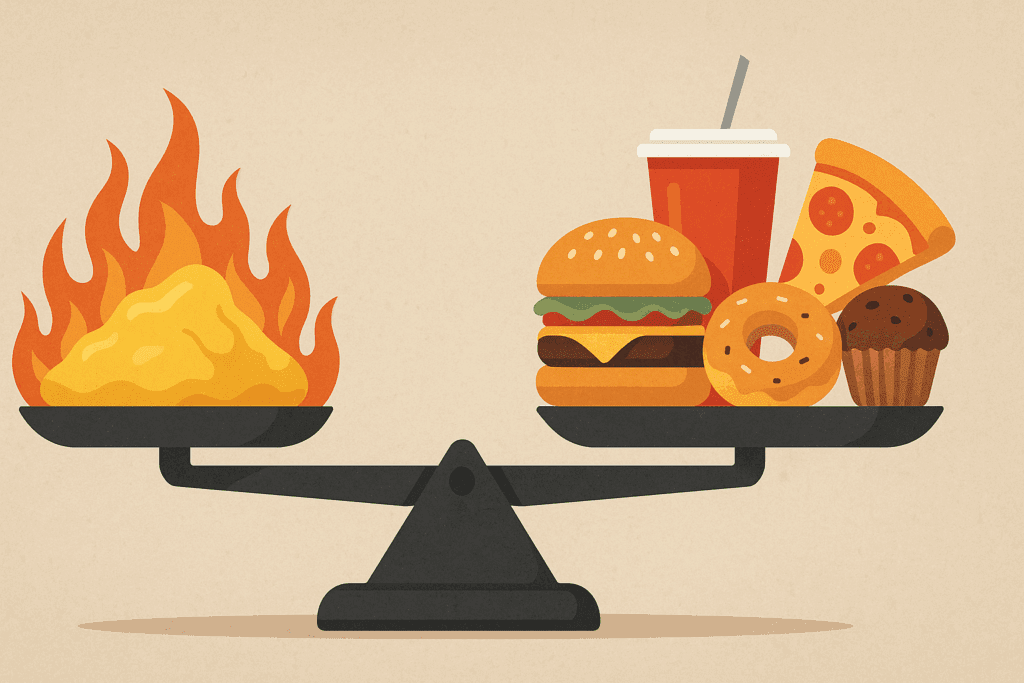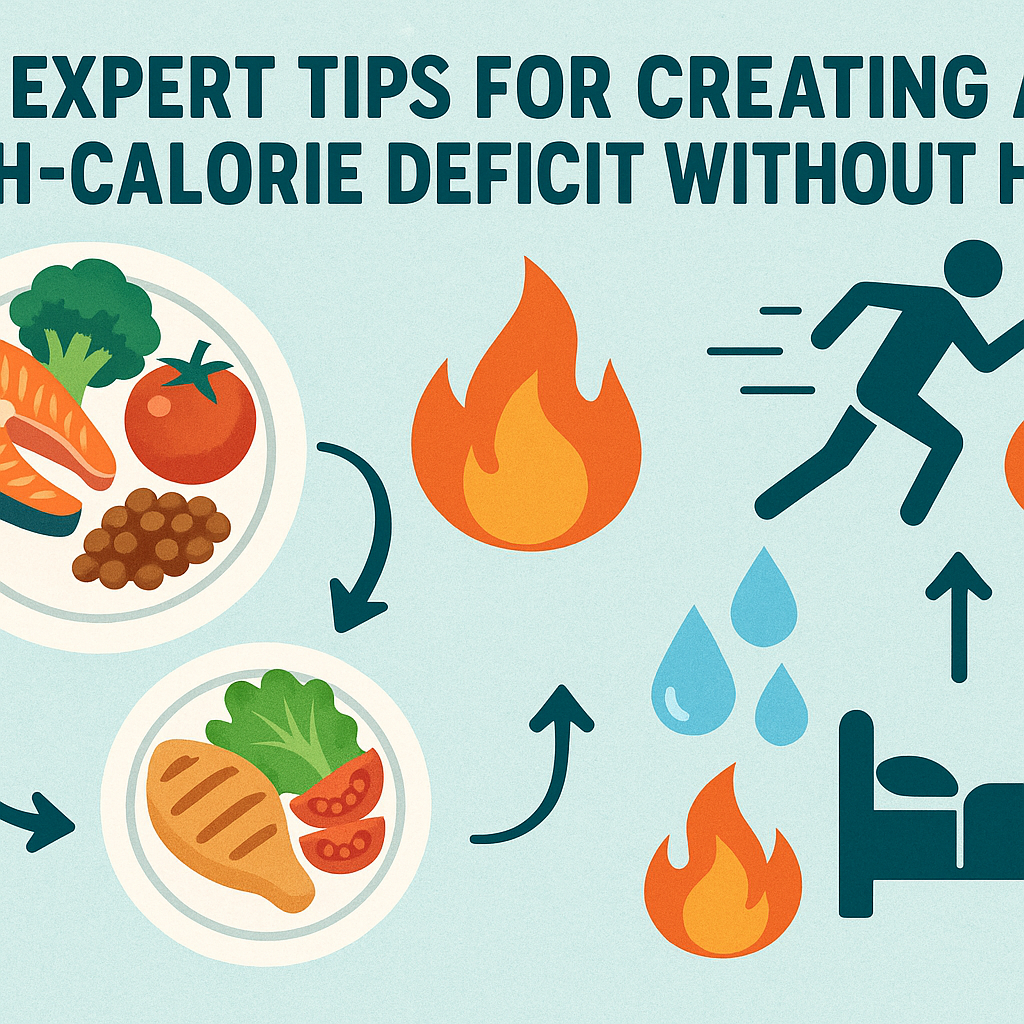The Truth Behind Rapid Weight Loss: Is Losing a Pound a Day Safe or Even Possible?
For those striving to meet weight loss goals quickly, the idea of shedding a pound a day sounds almost too good to be true. It sparks intrigue, hope, and sometimes confusion about what’s actually feasible within a 24-hour window. As the popularity of quick-fix diets and social media fitness trends continues to surge, many people are searching for expert-backed answers to a persistent question: Is it really possible to lose a pound a day? And if so, how can you lose one pound a day without compromising your health?
You may also like: Expert-Backed Weight Loss Tips for a Healthier Lifestyle: What You Need to Know for Long-Term Weight Control and Wellness
In this evidence-based exploration, we’ll examine what it really takes to lose 1 pound in a day, whether it’s sustainable or advisable, and how expert recommendations compare to trending methods. We’ll also break down the scientific basis behind fat loss, water weight fluctuations, and caloric deficits, while considering the physiological, psychological, and long-term implications of rapid weight changes. By the end, you’ll have a clear, practical, and medically accurate understanding of how to lose a pound a day—and more importantly, whether you should.

Understanding the Math Behind Weight Loss: What Does a Pound Actually Represent?
Before diving into how to lose a pound a day, it’s essential to understand what that pound actually consists of. A single pound of body weight equates to roughly 3,500 calories. This means that to lose one pound of fat in a day, a person would need to create a calorie deficit of 3,500 within that 24-hour period. Theoretically, this can happen through extreme calorie restriction, excessive physical activity, or a combination of both. However, the reality is far more complex than simple arithmetic.
Most bodies resist large, abrupt changes in weight due to hormonal regulation and metabolic compensation. When caloric intake drops drastically, the body initiates protective mechanisms such as slowing the metabolic rate, increasing hunger signals, and preserving fat stores. Therefore, while the math suggests it’s possible to lose a pound a day, the physiology of the human body presents considerable barriers.
Additionally, not all weight loss is fat loss. Initial rapid drops on the scale often reflect loss of water weight, glycogen stores, or muscle mass—especially in the early stages of a new diet. Thus, when people ask how can you lose one pound a day, they may be referring to total weight, not necessarily fat, which introduces a critical distinction.

The Role of Water Weight: Why the Scale Can Drop Fast—But Misleadingly
One of the most misunderstood aspects of rapid weight loss is the contribution of water. When individuals switch to a low-carbohydrate or calorie-restricted diet, they often experience significant water loss in the first few days. Glycogen—the storage form of glucose in the body—is bound to water in a ratio of approximately 1 gram of glycogen to 3–4 grams of water. As glycogen is depleted through dieting or fasting, this bound water is also excreted, leading to a sudden decrease in weight.
This is why people experimenting with how to lose 2 lbs a day or even how to lose a pound a day may see success initially. But the weight lost is predominantly water, not fat. Once glycogen stores are exhausted and hydration stabilizes, the scale tends to plateau unless fat loss mechanisms are actively in play.
Understanding the difference between water loss and fat loss is crucial when assessing strategies on how to lose 1 pound in 1 day. While a temporary reduction in water weight is harmless for most, prolonged dehydration or electrolyte imbalance can pose serious health risks.

Can You Burn 3,500 Calories a Day? The Physical Limits of Energy Expenditure
If creating a 3,500-calorie deficit is required to lose a pound of fat, then one might ask whether it’s possible to simply exercise the weight away. High-intensity workouts such as running, cycling, or swimming can burn a significant number of calories—typically between 500 to 1,000 per hour depending on intensity and individual weight. But reaching a 3,500-calorie burn in a single day would demand extreme, sustained activity levels, which are not only unrealistic for most but potentially dangerous.
Elite athletes may burn this amount during long endurance events like triathlons or ultra-marathons, but such efforts are not advisable—or sustainable—for the average individual. Furthermore, aggressive attempts to emulate these energy expenditures may result in overuse injuries, hormonal dysregulation, or compromised immune function.
So while it might seem like an effective solution for how to lose a lb a day, burning 3,500 calories through exercise alone is not a practical approach for most people. A more reasonable strategy involves moderate caloric restriction combined with strategic movement, such as walking, strength training, and interval workouts.

Nutritional Strategies That Support Rapid Weight Reduction—Without Compromising Health
When discussing how to lose 1lb a day, nutrition inevitably takes center stage. Short-term calorie restriction can be used to induce a temporary energy deficit, but the method must be approached with care. Crash diets that severely cut calories below 1,200 for women or 1,500 for men can lead to fatigue, nutrient deficiencies, and muscle wasting. However, intelligently structured eating plans can create substantial—but safer—deficits.
Intermittent fasting protocols, such as 16:8 or alternate-day fasting, can help some individuals reduce caloric intake without feeling deprived. Additionally, low-carbohydrate, high-protein diets can enhance satiety and increase thermogenesis, modestly boosting the number of calories burned through digestion.
To pursue how to lose a pound a day safely, diet plans must prioritize lean protein sources, fiber-rich vegetables, healthy fats, and hydration. High-volume, low-calorie foods like leafy greens, cauliflower, zucchini, and broth-based soups allow for fullness without excess calories. Eliminating sugar-sweetened beverages and processed foods can also support fast—but still balanced—weight loss efforts.
Temporary Weight Loss vs. Long-Term Fat Loss: Why Sustainability Matters
There is a critical difference between losing a pound a day for a few days and maintaining fat loss over weeks or months. While temporary daily reductions in weight may be achievable under controlled conditions, sustaining that pace is neither healthy nor realistic for long-term outcomes. Experts emphasize that sustainable fat loss typically ranges between 1–2 pounds per week, aligning with the body’s natural adaptive mechanisms and nutritional needs.
When exploring how to lose 2 pounds a day or even how to lose two pounds a day consistently, the focus must shift toward lifestyle transformation rather than crash dieting. Long-term success relies on establishing daily habits that include mindful eating, consistent physical activity, quality sleep, and stress regulation. Without these pillars, any initial weight loss is likely to be regained—sometimes with additional fat storage due to metabolic compensation.
Moreover, repeated cycles of extreme weight loss followed by regain—commonly known as “yo-yo dieting”—can alter body composition over time, decreasing lean muscle mass and increasing fat retention. This underscores why strategies marketed as how to lose 1 pound a day must be evaluated through the lens of medical evidence, not just scale fluctuations.
Medical Insights on Rapid Fat Loss: What Doctors and Dietitians Want You to Know
From a clinical standpoint, doctors and registered dietitians caution against pursuing rapid weight loss without proper supervision. For those asking how can I lose 2 pounds in a day, medical professionals urge a deeper look into motivation, method, and metabolic health. In certain cases—such as patients with obesity preparing for bariatric surgery or dealing with fluid retention—short-term, physician-directed plans may yield quick weight reductions under close monitoring.
However, for the general population, attempting to lose a pound a day without medical support can result in hypoglycemia, electrolyte imbalances, fatigue, and gallstones. Nutritional adequacy must never be sacrificed in the pursuit of fast results, as deficiencies in essential vitamins, minerals, and electrolytes can impair everything from cognition to cardiovascular function.
Moreover, individuals with underlying health conditions, such as diabetes, thyroid disorders, or heart disease, should not attempt aggressive dieting without consulting their healthcare provider. When it comes to how many pounds can you lose in a day, the safest answer is: as little as your body allows while maintaining biological stability and mental well-being.

Psychological Factors Behind Rapid Weight Goals: Why the Scale Isn’t the Only Metric
In the rush to discover how to lose a pound a day, many overlook the psychological toll of intense dieting and body-image obsession. A hyper-focus on daily weight can breed anxiety, disordered eating, and a distorted sense of self-worth. People may begin associating their value with numerical results, leading to feelings of failure during plateaus or weight rebounds.
Experts recommend focusing on body composition, measurements, strength, energy, and how clothes fit rather than obsessing over short-term fluctuations. The scale may not reflect real changes in fat mass due to hydration shifts, inflammation, hormonal cycles, or digestive variables. So while losing a pound a day might feel rewarding in the short term, a more holistic view of progress helps preserve mental health.
Cognitive-behavioral therapy (CBT), journaling, and mindfulness practices can be powerful tools for reframing the weight loss journey. By shifting from aesthetic outcomes to health-driven goals, individuals are more likely to find fulfillment and resilience—both of which contribute to lasting success.

Expert Tips for Creating a High-Calorie Deficit Without Harm
If you are still curious about how to lose 1 pound a day safely, certain structured approaches can create meaningful short-term deficits without putting health at risk. A temporary high-calorie deficit might be achieved by combining a nutrient-dense low-calorie meal plan with active movement, hydration, and sleep optimization.
For instance, a person consuming around 1,200–1,500 calories while burning an additional 800–1,000 through structured workouts may create a deficit close to 2,500–3,000 calories in one day. Adding natural thermogenic foods—like chili peppers, green tea, or coffee—may further enhance energy expenditure slightly, though their effects are modest.
While this still may not fully reach the 3,500-calorie mark needed for how to lose a lb a day strictly through fat loss, it can result in noticeable short-term reductions due to water loss and reduced digestive content. Still, such strategies should be implemented for no more than a few days and only with professional oversight if pursued aggressively.

What Happens After the Pound is Gone: Maintaining Momentum and Preventing Rebound
Achieving a single day of weight loss, particularly through aggressive measures, is less impressive than being able to maintain or build upon that progress. The real challenge lies in continuing a downward trend in a healthy and sustainable way. After experiencing quick results, many individuals feel tempted to revert to old habits or overcompensate by binge eating, undoing much of the effort and risking weight regain.
To avoid this rebound effect, experts suggest transitioning from aggressive deficits to more moderate and sustainable approaches. Reintroducing calories gradually while increasing activity can support continued fat loss without overwhelming the metabolism or triggering cravings.
When discussing how to lose 2 pounds a day over time, it’s important to recognize that your body’s needs will change with every phase of your journey. A flexible mindset, consistent routines, and realistic expectations are essential to prevent burnout and promote resilience.
Frequently Asked Questions (FAQ): Can You Really Lose a Pound a Day?
1. Can you lose a pound a day without damaging your metabolism?
Yes, you can lose a pound a day temporarily, but doing so without harming your metabolism requires careful planning and a clear distinction between fat loss and overall weight loss. Most of the weight lost rapidly in a single day is water weight or glycogen depletion rather than true fat mass. However, if you’re asking how to lose 1 pound a day consistently through fat loss, the reality is more complex. Repeated attempts at aggressive calorie restriction can suppress your basal metabolic rate (BMR), making it harder to burn calories over time. This is especially relevant for those exploring how to lose a lb a day repeatedly—metabolic slowdown is a real risk, and any weight loss plan must include adequate nutrition, muscle preservation through resistance training, and metabolic recovery periods.
2. What is the difference between fat loss and weight loss when trying to lose a pound a day?
Fat loss refers to the reduction of adipose tissue, while weight loss includes fat, water, muscle, and undigested food. When people wonder how to lose a pound a day, they often confuse the number on the scale with fat reduction. A sudden drop in weight can be due to dehydration, especially on low-carb or fasting diets. If you’re aiming to understand how to lose 1 pound in 1 day effectively, it’s important to measure progress through body composition assessments or waist circumference rather than the scale alone. This ensures you’re tracking fat loss specifically and not unintentionally losing muscle, which would be counterproductive for long-term health.
3. How many pounds can you lose in a day safely, and is two pounds ever realistic?
In terms of scale weight, it is possible to lose two pounds in a single day under extreme conditions—but not necessarily safely or sustainably. While short-term weight changes are common with fluid shifts or fasting, the concept of how to lose 2 lbs a day every day lacks medical support. For those wondering how to lose two pounds a day safely, the key lies in viewing it as a rare event, such as after a high-sodium meal when excess water is retained and then quickly expelled. However, consistently aiming for two pounds a day is unlikely to be fat and may result in dehydration or muscle breakdown. Medical professionals agree that losing one to two pounds per week is a more achievable and safe target for fat loss.
4. Is losing a pound a day a sustainable goal over time?
While losing a pound a day might work briefly—especially for those with higher starting weights or those experiencing water loss—it is not sustainable over weeks or months. Many individuals exploring how to lose a pound a day initially succeed by combining calorie restriction with intense cardio, but eventually encounter plateaus due to metabolic adaptation. If you’re evaluating how to lose 1lb a day over time, it’s essential to adjust expectations and adopt a more gradual, health-focused strategy. Attempting long-term daily weight loss at this rate increases the risk of nutrient deficiencies, hormonal disruptions, and mental fatigue. Long-lasting results come from strategic consistency, not constant calorie deficits.
5. How can you lose one pound a day through nutrition alone?
While challenging, certain controlled dietary methods can result in short-term one-pound losses. Understanding how can you lose one pound a day through food involves reducing caloric intake while manipulating macronutrients. For instance, eliminating starchy carbohydrates and sodium for 24 hours can help shed excess water weight, giving the illusion of rapid fat loss. Those researching how to lose 1 pound a day through diet alone should focus on meals high in protein, fiber, and low in refined carbs. However, it’s crucial not to equate these quick results with sustainable fat loss, as returning to a typical eating pattern often brings the weight back unless lifestyle changes accompany the diet.
6. How to lose 2 pounds a day without starving yourself or overexercising?
To understand how to lose 2 pounds a day safely without deprivation, it’s important to shift focus from just calories to overall physiology. Strategic hydration, sauna use, and anti-inflammatory food choices can reduce bloating and inflammation-related water retention. Those seeking how can I lose 2 pounds in a day may benefit from a temporary low-carb, high-fiber, high-protein regimen paired with a brisk walk or circuit training. However, such results are rarely due to fat loss alone and should be seen as occasional strategies rather than everyday routines. Ultimately, losing a pound a day or more without stress on the body requires a professional plan that avoids extremes in favor of precision and balance.
7. Does intermittent fasting help with losing a pound a day?
Yes, intermittent fasting can be an effective strategy for some people to approach losing a pound a day, though results vary based on duration and adherence. Protocols like the 20:4 or alternate-day fasting regimens reduce total caloric intake and improve insulin sensitivity, both of which support weight reduction. For individuals exploring how to lose 1lb a day or even how to lose a lb a day consistently, fasting can provide a structured framework that naturally limits eating opportunities. Additionally, fasting often reduces bloating and inflammation, leading to visible reductions on the scale. That said, prolonged fasting without nutritional oversight can backfire, especially in those with blood sugar instability or high physical demands.
8. What are the psychological effects of attempting to lose weight this quickly?
Rapid weight loss attempts, particularly those focused on how to lose 1 pound in 1 day or how to lose 2 pounds a day, can trigger psychological challenges. The pressure to see daily results often leads to obsessive weighing, food guilt, and distorted body image. When the number on the scale doesn’t move—or increases due to natural body fluctuations—it can cause discouragement, disordered eating, or emotional instability. Those striving to figure out how to lose a pound a day may overlook the importance of mental health support in their journey. Long-term wellness requires self-compassion, not just willpower, and recognizing that psychological resilience is as vital as physical effort.
9. Are there medical conditions that can interfere with losing a pound a day?
Yes, several health conditions can make it difficult or unsafe to lose weight rapidly. Hypothyroidism, PCOS, insulin resistance, and certain medications can all hinder fat loss despite dietary efforts. Individuals who struggle with how to lose a pound a day—or who are not seeing results with conventional methods—should consult a healthcare provider for metabolic testing. For those asking how to lose 2 pounds a day in spite of underlying conditions, it’s crucial to tailor the approach with medical oversight. Rapid weight loss may also mask more serious issues, such as adrenal fatigue or gastrointestinal disorders, which must be addressed before aggressive dieting. Personalized care is essential for sustainable and safe weight outcomes.
10. What’s the most effective way to transition from rapid weight loss to long-term maintenance?
After experimenting with how to lose a pound a day, it’s vital to shift gears toward preserving the results without rebound. This transition involves gradually increasing calories while maintaining high-protein intake and regular movement. Individuals exploring how to lose 2 lbs a day often find that the real success comes from what happens afterward—whether they regain the weight or stabilize. Resistance training helps maintain muscle mass and metabolism, while mindful eating reduces the risk of binge behaviors. The most effective transitions involve reverse dieting, daily routines that reinforce healthy behaviors, and periodic check-ins to recalibrate goals. Without a thoughtful post-loss plan, the hard-earned results from losing a pound a day can vanish as quickly as they appeared.
Final Thoughts: Can You Lose a Pound a Day Without Losing Yourself in the Process?
The idea of losing a pound a day captures attention for good reason—it offers the promise of transformation on a highly compressed timeline. But while short-term weight loss may be achievable in specific conditions, most of the weight lost will consist of water and glycogen rather than fat. The pursuit of how to lose 1 pound in 1 day must be grounded in scientific understanding, not social media trends or crash diets.
Ultimately, sustainable fat loss takes time, effort, and a commitment to lifestyle change. For those genuinely seeking answers to how to lose a pound a day or how to lose 2 pounds a day, the most reliable solution lies in structured eating, consistent exercise, adequate hydration, proper sleep, and ongoing support. Your body is not just a machine to manipulate—it’s a complex system that thrives when treated with care, consistency, and respect.
So yes, under certain conditions, you can lose a pound a day. But the real question isn’t just whether you can—it’s whether you should. When you shift your focus from rapid outcomes to long-term health, you’ll not only change your weight, but the way you live your life.
Was this article helpful? Don’t let it stop with you. Share it right now with someone who needs to see it—whether it’s a friend, a colleague, or your whole network. And if staying ahead on this topic matters to you, subscribe to this publication for the most up-to-date information. You’ll get the latest insights delivered straight to you—no searching, no missing out.


